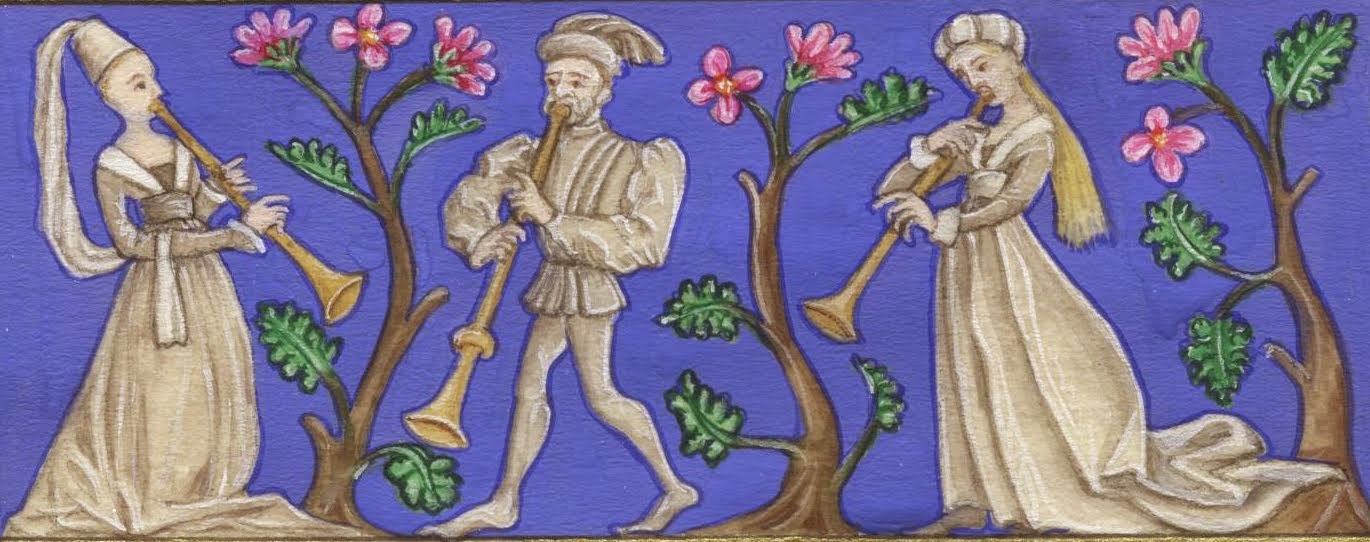So - instruments and vocal music in the middle ages. When I started getting seriously interested in medieval music in the 1990s in Britain, as an instrumentalist, there were two obvious problems. First, the amount of surviving music that could be classed as instrumental from before 1400 is extremely limited (some estampies and istampittas and... that's about all). Second, there seemed to be a prevailing view that the huge remaining repertoire of vocal music should be sung. Only sung. Must be performed vocally or not at all. For a few genres (e.g. the more 'popular' ones) it might be okay to add instruments occasionally, but for most (particularly any high art music, or music with a liturgical origin, i.e., most of what survives as this is what tended to get written down) much better not, if you wanted to 'do it right'.
Hopefully some of you will recognise in this post's title the reference to one of the most influential researchers in this area, Christopher Page, who in particular brought extensive insights from study of literary sources that describe musical performance (I recommend anyone to read his work, both for the wealth of references and the lovely writing style). He is often given credit (or blamed, depending on your point of view) for promulgating the 'it must be only vocal' ethos. Of course his actual writing is more nuanced, but this is the message that seems to have caught on.
In thinking about this post I re-read an interesting short chapter he wrote ("The English a cappella heresy" in Knighton & Fallows, Companion to Medieval and Renaissance Music) that provided some of the context in which he developed and presented these arguments. Basically, he was challenging existing scholarship that suggested that some melodic lines in polyphonic compositions were 'obviously' instrumental in character, and a prevailing performance practice that emphasised instrumental variety and virtuosity (or a "fad for exotic instruments"). Quite reasonably, he (and others) accumulated evidence (and demonstrated by example) that purely vocal performance of these pieces was both historically and practically plausible.
However, even if should be considered established that this music was 'vocal' - in the sense that the composer primarily intended it to be sung, and when heard in the middle ages, it was usually sung - this leaves wide open the question whether it was also played. The fact many early keyboard pieces are intabulations of (vocal) motets is a bit of a clue here. It seems unlikely instrumentalists were off in their own (sadly unrecorded) sound world and never thought of trying out the latest vocal compositions on their instruments. It may be that "musical instruments participated in liturgical services only on the most rare and solemn occasions" (Page, page 27) but would musicians have instantly forgotten these sounds as soon as they left the church? Perhaps it is a stretch to play organum on shawm and bagpipe (as we sometimes do) but it seems preferable to revive and present some of this vast, often unheard repertoire, than to play estampie 5 again.
Clearly lots to say on this topic so will continue in future!

This comment has been removed by the author.
ReplyDelete